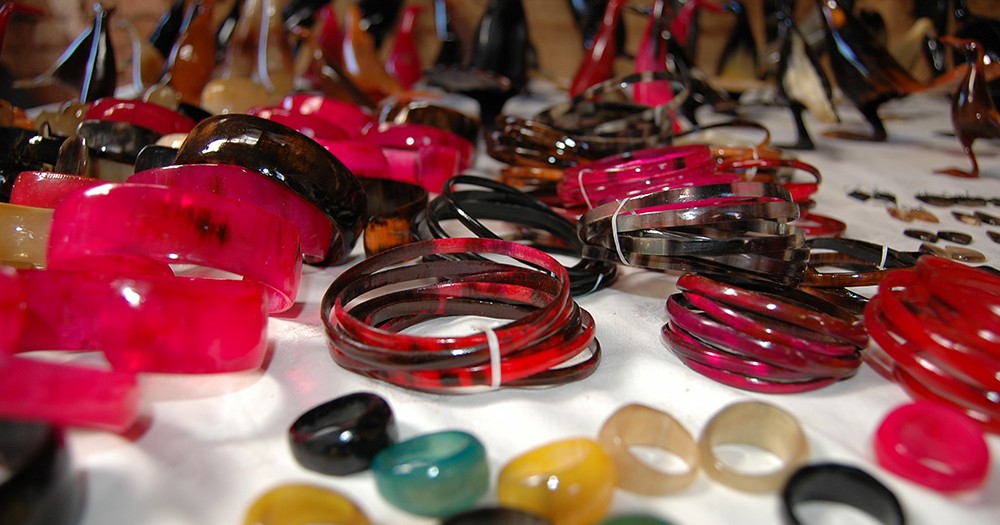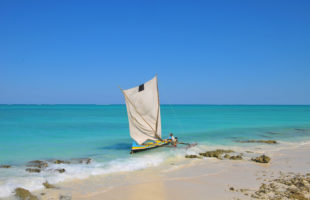The zebu is Madagascar’s most common kept animal, and shapes the country today strongly. Whether on the road, in the middle of the city, on rice fields or in the smallest hut villages – everywhere you will find cattle with the typical hump. They provide many Madagascans with a small income, offer meat and – admittedly relatively little – give milk. In addition, many craftsmen make small works of art from the horn of slaughtered animals.

An old-established studio is located in Antsirabe, directly on the RN7 about 150 km south of the capital Antananarivo, in the Vakinankaratra region. A small family business has made a name for itself here. They call themselves “Les six frères”, in English the six brothers.
Their workshop looks unspectacular from the outside: a simple brick building with a door made of wooden planks. Inside in a simple courtyard with a clay floor, professional tools are unsuccessfully sought after. But the six brothers like to show how to produce everyday objects and works of art from zebu horn with the simplest means. The horn is heated over a small fire. It is then beaten onto the ground to remove the underlying bone. Depending on the planned work of art, natural colours are applied to obtain red, purple or yellow pieces. Then the horn is cut with homemade saws and a small axe – any wrong blow can destroy the horn. On the fire the horn is formed and hot iron rods burn patterns into the figures. Later, the horn artwork is fine-tuned on an ancient, rickety grinding machine and polished to a high gloss by hand. Not everyone masters this art of craftsmanship, and particularly filigree figures require long work.
On a counter the family sells chains, bracelets, hair clips, animal figures, cutlery and bowls made of zebu horn, of course all directly on site by them. Every piece you buy here is absolutely unique!
Le six frères
Ravalison Désiré
Lot 17 F 40 Ivory
Antsirabe
 MADAMAGAZINE Your Magazine about Madagascar
MADAMAGAZINE Your Magazine about Madagascar











